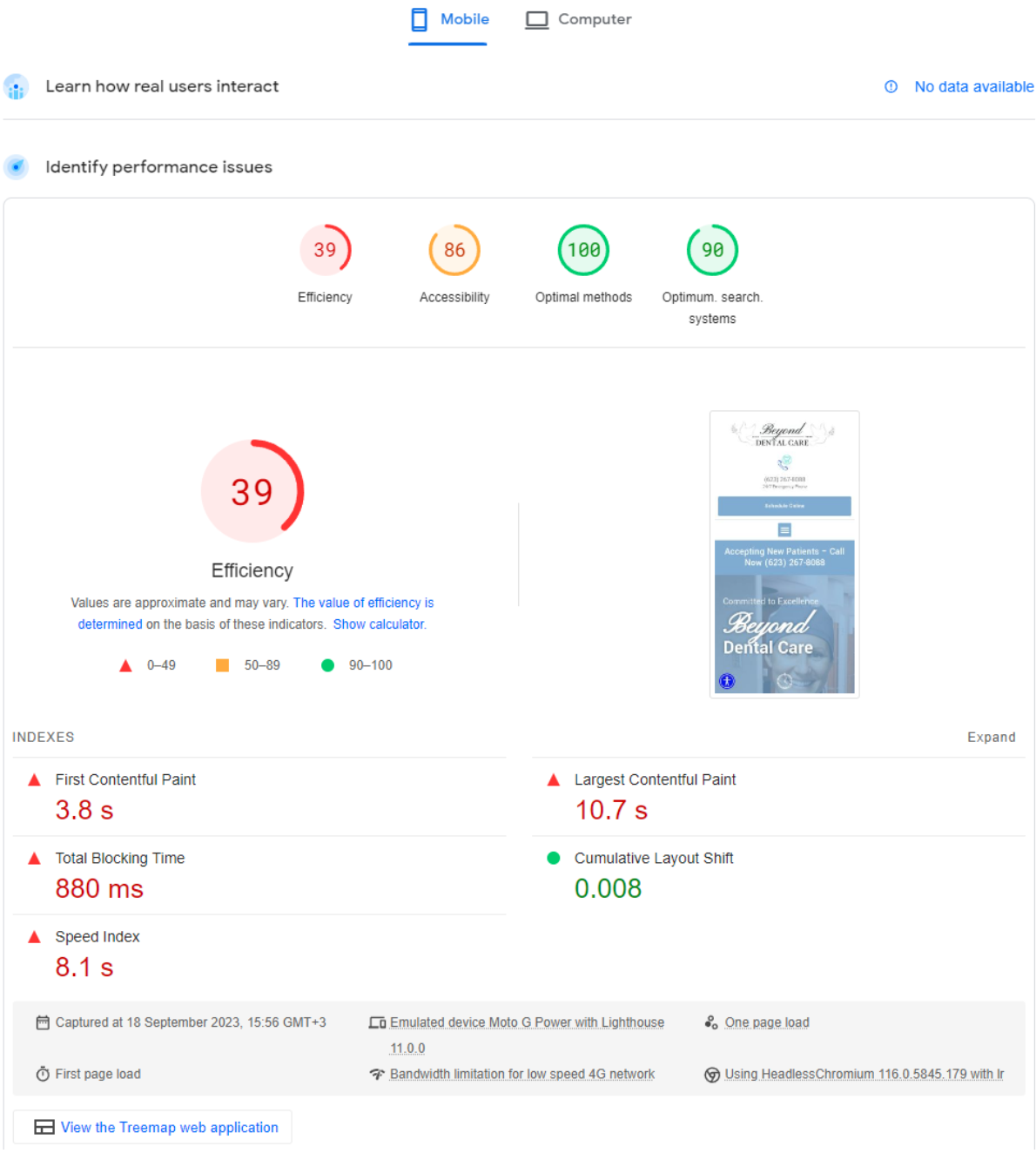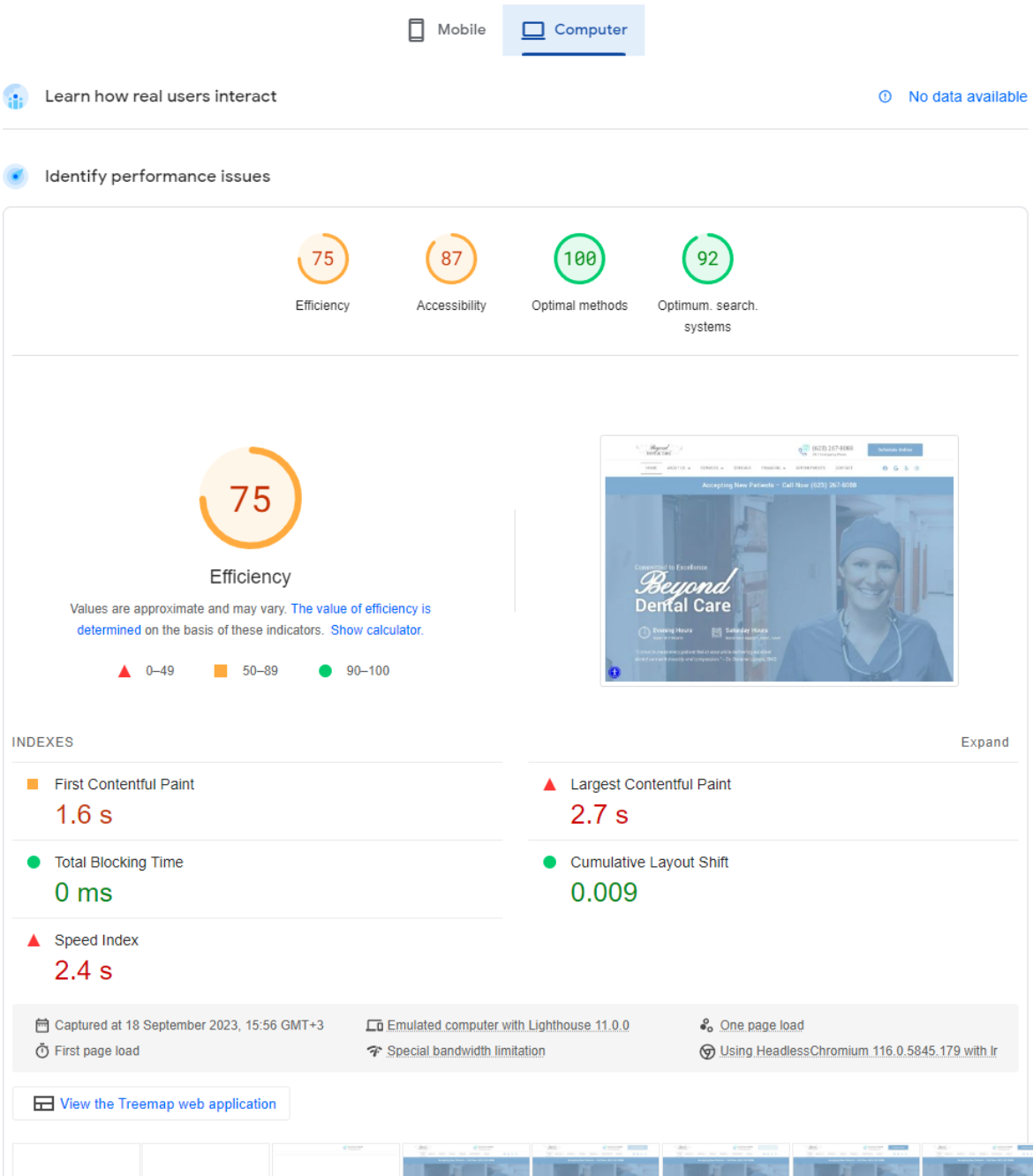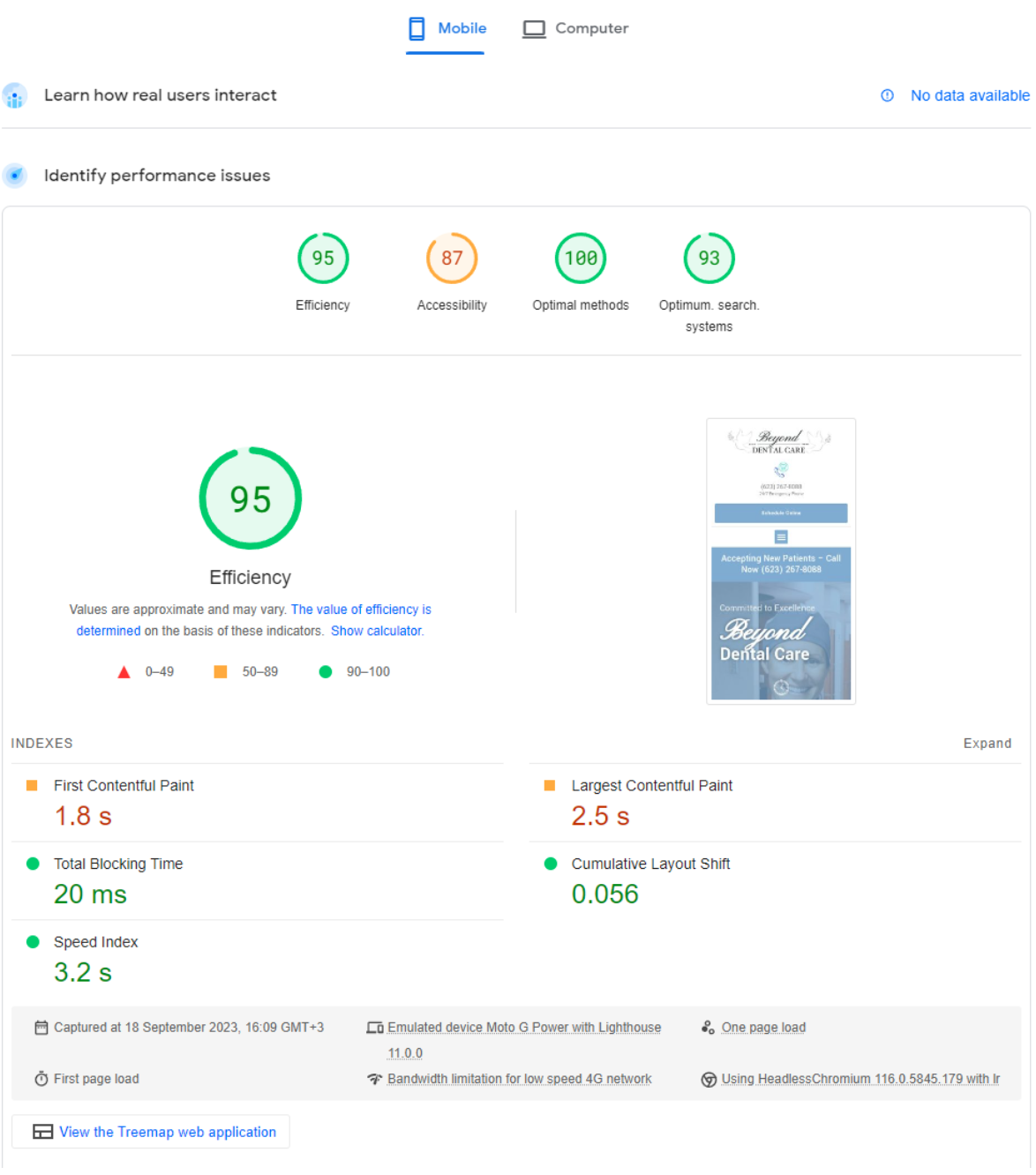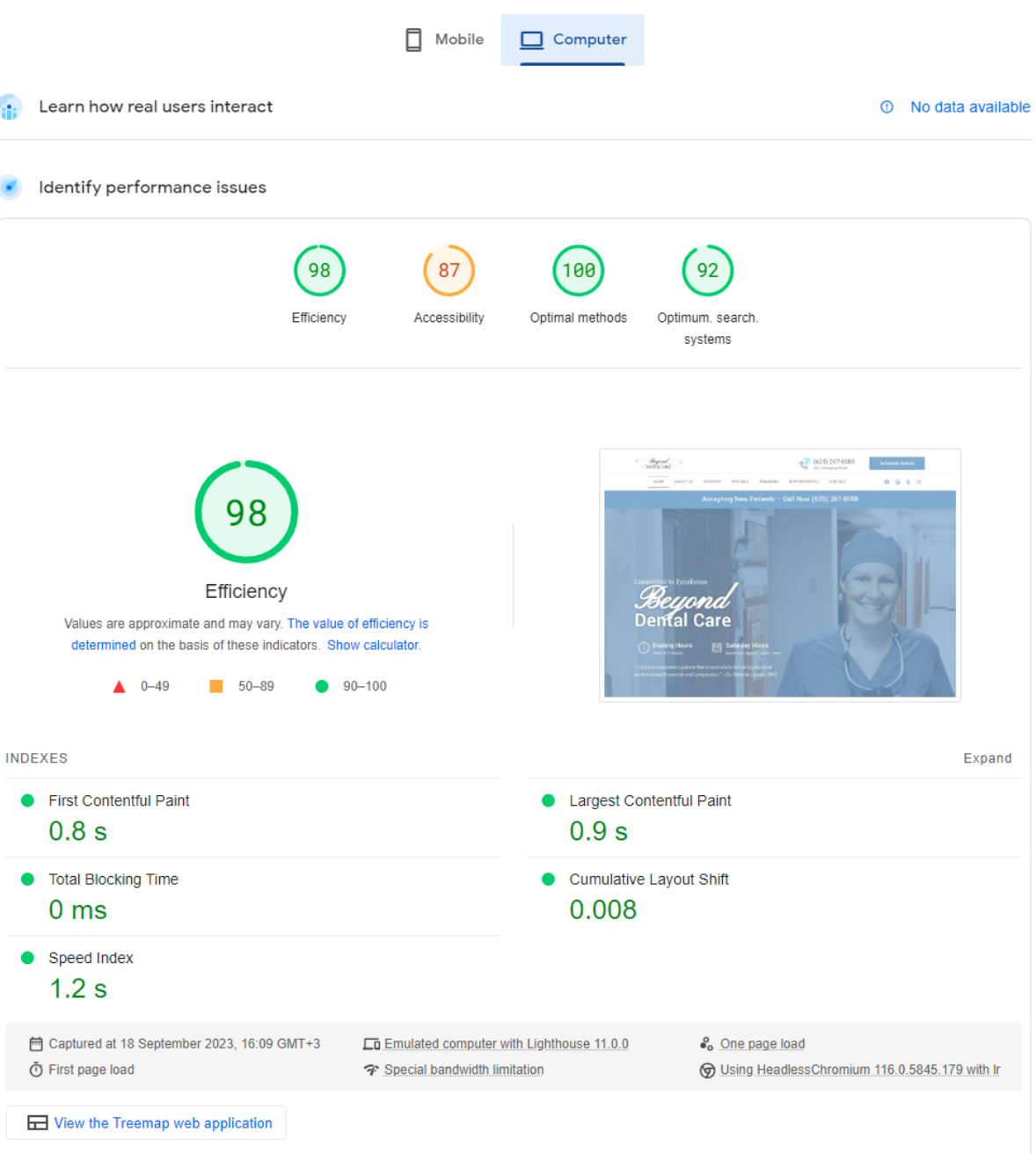A multi-location dental clinic asked us to improve their WordPress site after patients reported slow pages and laggy booking. We audited the stack, prioritized Core Web Vitals (LCP, INP, CLS), and shipped fixes as part of our WordPress optimization services.
Baseline & diagnostics
We measured with Google PageSpeed Insights (Lighthouse lab data), CrUX field data, and GTmetrix waterfalls to separate render-blocking issues from server delays — our standard workflow for Google PageSpeed optimization.
Key bottlenecks included large hero images, unused CSS/JS, third-party scripts loading too early, and heavy booking/widgets impacting mobile interaction.


Fixes implemented
Code & JavaScript
We generated critical CSS, deferred or async-loaded non-critical JavaScript, and removed unused CSS/JS. We added preconnect / preload / dns-prefetch for key origins and trimmed plugin bloat to cut main-thread work and stabilize paint.
Images
We converted assets to WebP/AVIF, enforced responsive srcset with explicit width/height to prevent CLS, and enabled lazy-loading so off-screen imagery doesn’t block first render — an approach aligned with our mobile optimization for WordPress websites.
Caching & hosting
We tuned page and browser caching, recommended a Redis object cache for dynamic fragments, and aligned CDN rules (cache keys, TTLs, and bypass logic) to reduce TTFB and improve repeat-view speed.
Third-party & embeds
We delayed non-essential third-party scripts (chat, analytics, tag managers) until user interaction/consent and lazy-loaded iframes/embeds (maps, video) so they no longer block the main thread.
UX & accessibility notes (healthcare)
We optimized the booking widget to load after first interaction, streamlined patient forms, and deferred map embeds on “Locations” pages to protect mobile INP without sacrificing usability.
Results
The performed manipulations allowed us to improve the performance of the mobile and desktop versions of the site. Let’s see how much faster the site loads now.


As we can see, in both versions the performance indicators are in the green zone. In addition, Core Web Vitals have improved, they play an important role in SEO. Let’s compare the before and after indicators in the table.
| Core Web Vitals | Scores before WordPress Website Optimization | Scores after WordPress Website Optimization |
| Desktop Google Pagespeed | 75 | 98 |
| Mobile Google Pagespeed | 39 | 95 |
| Mobile LCP (Largest Contentful Paint) | 10,7 sec | 2,5 sec |
| Desktop LCP (Largest Contentful Paint) | 2,7 sec | 0,9 sec |
| Mobile FCP (First Contentful Paint) | 3,8 sec | 1,8 sec |
| Desktop FCP (First Contentful Paint) | 1,6 sec | 0,8 sec |
| Mobile Speed Index | 8,1 sec | 3,2 sec |
| Desktop Speed Index | 2,4 sec | 1,2 sec |
In this case study, basic optimization resulted in a website that was easier for search engines to index and therefore more SEO-friendly. In addition, the user experience has significantly improved, because users do not have to wait long for the site to load. Optimization is an important aspect of smooth operation. Write to us to get a free audit, identify major performance problems, and find solutions!











